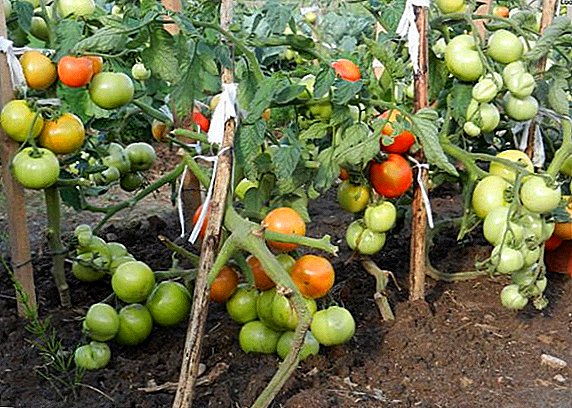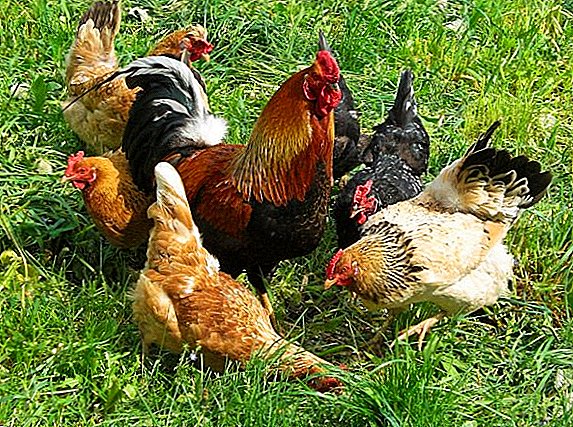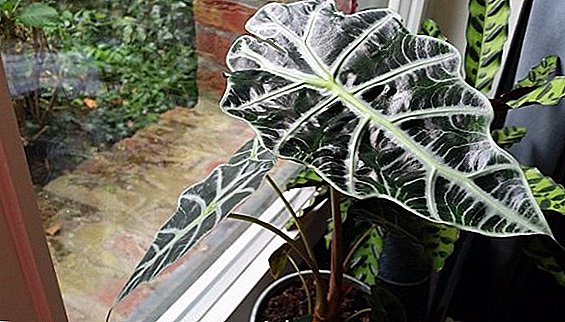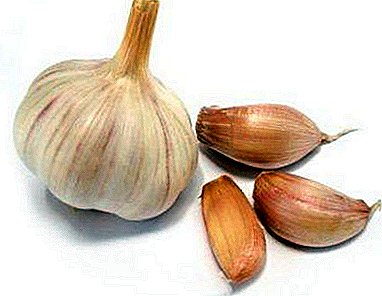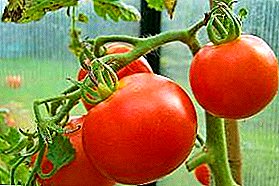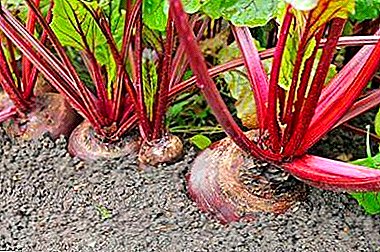
Beetroot belongs to the Amaranth family (formerly belonged to the Mariev family). In the South Russian dialects there is the dialect name "Buriak".
Varieties: root and leaf beets. Root crops have an elongated, conical or round shape and dark red flesh.
The text describes how to prepare the seeds at home and how to grow different varieties of beets, and where it is best, including the sweet Sugar variety.
Cultivation features
Beet seed is a seed fruit consisting of two or three seeds, each of which produces a sprout. In order to increase the germination rate when growing a crop, it is recommended to soak the seeds for 2-3 days at home: pour them into a container with a small amount of water (the liquid should only lightly cover the seeds), and then replace the water every 4-6 hours. Besides, to increase the activity of germination, you can soak the seeds for 12-18 hours in a solution of boric acid (at the rate of 0.2 g per 1 liter of water).
When sowing directly into the ground as early as possible, it is necessary to sprout the seedlings, otherwise thickening will cause the plants to weaken. With a seedling method, thinning is not required; in addition, this method contributes to seed saving and accelerated seedling development. Beet heat-loving, for seed germination requires a temperature not lower than 8 ° C.
When and where are the seeds planted?
 Beetroot is the most thermophilic culture among root plants, its seedlings are damaged at a temperature of minus 2-3 ° C.
Beetroot is the most thermophilic culture among root plants, its seedlings are damaged at a temperature of minus 2-3 ° C.
Sowing is carried out approximately two weeks after the carrot. Beets love to grow on the edge of the ridge, which is why it blends well in the same space with kohlrabi, celery and cauliflower. Prefers well-lit places, in the initial period of growth (before tying the root) needs moisture. Relatively easy tolerates transplant.
How to choose the right grade?
Currently, there are many imported hybrids of beets, characterized by early ripening and resistance to disease.
It is important to remember that each beet variety has its own characteristics:
| Beet ordinary | |||
| Root | Leafy | ||
| Beetroot | Sugar beet. | Fodder beet. | Other names:
|
| It happens red and white. | Yellowish white, used to make sugar. The most late maturity. | Technical culture, goes to feed agricultural animals. The shape and color of different varieties differ. | Leaves and petioles are eaten, root crops are absent. |
| Beetroot | ||
| Winifolia | Rubrifolia | Atrorubra |
| Green leaves and petiole (sometimes petiole weakly pigmented), roots of elongated conical shape, have strong roots. | Dark red leaves and roots. Rounded, rounded-conical or rounded-flat form of root crops. | Dark red flesh and dark green leaf with red-violet veins. |
Famous varieties:
| ||
New selection varieties:
| ||
 Sugar beet:
Sugar beet:
- Clarina;
- Nancy;
- Bohemia;
- Bona;
- Sphinx;
- Mandarin.
Fodder beet:
- Lada;
- Milan;
- Hope;
- Barres;
- Record;
- Vermon, etc.
Leaf beets:
- Beauty;
- Scarlet;
- Red;
- Green;
- Belavinka;
- White Silver;
- White Silver 2;
- White Silver 3;
- Lucullus, etc.
Basically, in the gardens they grow beets.
Which grade is better?
| Early varieties |
|
| Mid-season varieties |
|
| Late varieties |
|
Recommendations for growing at the cottage
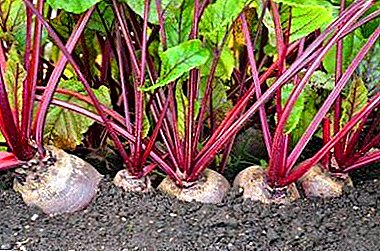 The soil.
The soil.With a neutral reaction. It is not recommended to make fresh manure, as the root can start to rot. For early-ripening varieties, it is necessary to use well-drained, fertile soils. For later varieties it is possible to use heavier soils.
- Early beets.
They have 2-3 stems each, the distance between the holes in a row is 10 cm, the spacing between rows is 15-20 cm. At the end of February - beginning of March, the sowing is carried out in a greenhouse, and from late March to April - in open ground (according to the same scheme).
- Mid-season varieties.
In May or June, open field planting is carried out. Sow two or three seeds (one seed). The distance between the sockets - 10-15 cm, row spacing 30 cm.
- Submarine cultivation.
The end of June or the beginning of July. The distance between the sockets is 7-8 cm, between the rows - 30 cm.
- Growing beet seedlings.
Benefits - getting the first root vegetables about 20 days earlier. Planting beets should begin no earlier than April, and by mid-May, you can already plant sprouts in open ground. With this method of planting, unlike planting in open ground, thinning is not required. When transplanting into open ground, the central root is shortened to one third of the length.
To speed up rooting, seedlings protect from the sun with non-woven material and watered with a solution of humate. When the seedlings are stronger, the shelter is removed, the plants are thinned, and then the planting area is mulched to maintain soil moisture and protect against weeds.
Secrets of a good harvest
How to grow beets in the open field?
- Seedlings should not be re-grown, since small plants take root better.
- The seedling method for fodder beet is especially important, as it increases its productivity.
- Beetroots need trace elements, especially boron.
- For top dressing it is better to choose wood ash and potash fertilizers.
- Weeding is carried out immediately after the emergence of seedlings of beets.
Step care
Watering
 Especially important is regular watering of beets in hot, dry weather. About 10 liters per 1 m² should be spent per week. Excess water is also undesirable, as it can lead to enhanced leaf growth.and not root vegetables. If the site is not mulch, then the next day after watering it must be plowed 4 cm. The earth around the plantings is loosened with a hoe, without touching the plants themselves. To increase the sugar content of the beets before watering in a bucket of water it is necessary to dissolve a tablespoon of table salt. To improve the keeping quality of root crops, watering is stopped two weeks before harvesting.
Especially important is regular watering of beets in hot, dry weather. About 10 liters per 1 m² should be spent per week. Excess water is also undesirable, as it can lead to enhanced leaf growth.and not root vegetables. If the site is not mulch, then the next day after watering it must be plowed 4 cm. The earth around the plantings is loosened with a hoe, without touching the plants themselves. To increase the sugar content of the beets before watering in a bucket of water it is necessary to dissolve a tablespoon of table salt. To improve the keeping quality of root crops, watering is stopped two weeks before harvesting.
Top dressing
Beets need to be fed every two weeks with a solution of potash fertilizer (about 3 tablespoons. Fertilizers per 10 liters of water), pouring at least two glasses under each plant. When leaf growth is slowed down, a single infusion is given with infusion of weeds. You can also feed beet infusions of mullein: 1 bucket of mullein and half a bucket of ash for 10 buckets of water.
Cultivation technology
The advantage of growing beets over other vegetables is the possibility of using a set of machines.
- Seeders. There are automatic and manual seeders. Automatic used for growing beets on large plots, manual - for growing in their own garden. Automatic seeders are divided into mechanical (with a maximum working speed of 6 km / h) and pneumatic (7-8 km / h). The manual seeder is designed for single-row sowing of seeds, with its help it is possible to sow a land plot of 10 acres per hour. Thanks to accurate seeding, seed savings are possible, as well as accurate distribution of planting material.
- Thinners.
- Tilled cultivators. Designed for weeding, fertilization and hilling.
- Beet harvesters. Designed for harvesting sugar and fodder beets. There are two types: the topping type (the roots are extracted from the soil by the topping method, and the tops are cut off already in the machine) and with a preliminary cut of the tops.
- Haulm harvesters
- Beetroot loaders. There are stationary and mobile. Carry out the selection of root crops, partial cleaning of the ground, as well as loading.
Agricultural engineering errors
 Consider further why the crop does not always grow well in the gardens and what to do to get a harvest of healthy and large root crops.
Consider further why the crop does not always grow well in the gardens and what to do to get a harvest of healthy and large root crops.
- It is necessary to monitor the weather: if the beet crops fall under a strong lowering of the temperature, then they can go into tsvetushnost without the ovary of the root.
- It is not recommended to plant beets on sour and waterlogged soils.
- If white rings are visible at the root section, it means that the beets have been overfed with nitrogen fertilizers. This beet is not recommended for food.
Collection and storage of root vegetables
With early sowing, you can try harvesting as early as July., but the main part of plants will ripen only by August. When late sowing beets are harvested in the second half of September or in October. For storage, root crops are laid in boxes at a short distance from each other, sprinkling them with sawdust. It is necessary to store beets in a room protected from frost.
Diseases and pests
| Diseases | |
| Fungus disease seedling seedlings | Due to the thickening of the crops, the seed-beet knee of the beets dries out and turns black. The stem at the base dries. For the prevention of disease, the crops are watered with a solution of Fitosporin, and also carefully thinned. |
| Perinospora or downy mildew | It is necessary to water the planting solution "Fitosporina". |
| Leaf mosaic | Viral disease, reduces yields. Currently, effective means of struggle are not found. |
| Pests | |
| Beet aphid | It is necessary to treat the plants with the preparation "Fitoferm". After two for after processing plants can be eaten. |
| Spring and summer flies | It is necessary to water the plants with a solution of salt (1 cup of salt in a bucket of water). |
| Beetroot bug | The reason for the spread is weed. |
Prevention of various problems
- When growing chard (leaf beet), you must constantly remove the edge leaves, which can be immediately used as food. Otherwise, the plant will bloom.
- Red beet leaves - an indicator of too acidic soil or lack of sodium. To get rid of the problem, it is necessary to sprinkle the soil with ashes, and then pour the plants directly on the leaves with salt water (1 cup of salt per 10 liters of water). Spend 1 l. solution on 1 meter of landings.
Beetroot is one of the most useful vegetables: it is rich in vitamins and microelements, due to its antioxidant content, it is used for the prevention of cancer, in addition, beet is rich in iron, which makes it an indispensable aid in the treatment of anemia (what is good for root vegetables?). At the moment there are many varieties of beets, it is used in food, animal feed, in the production of sugar, which makes it one of the most valuable products in our life.


 The soil.
The soil.